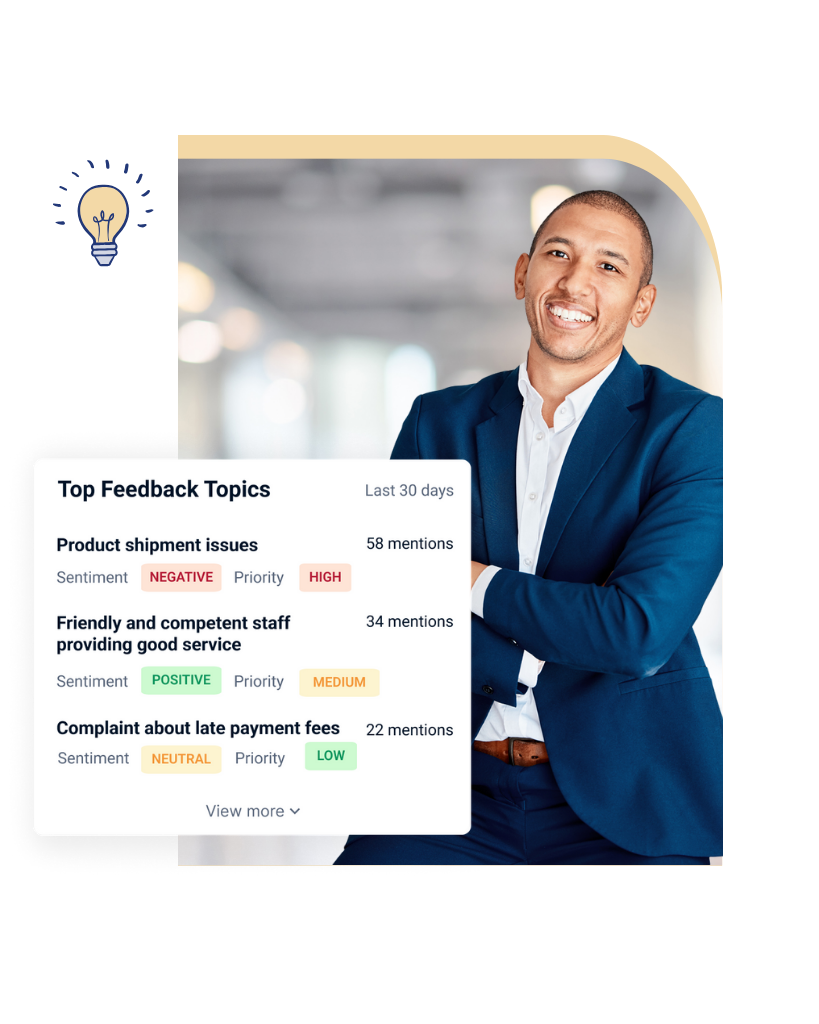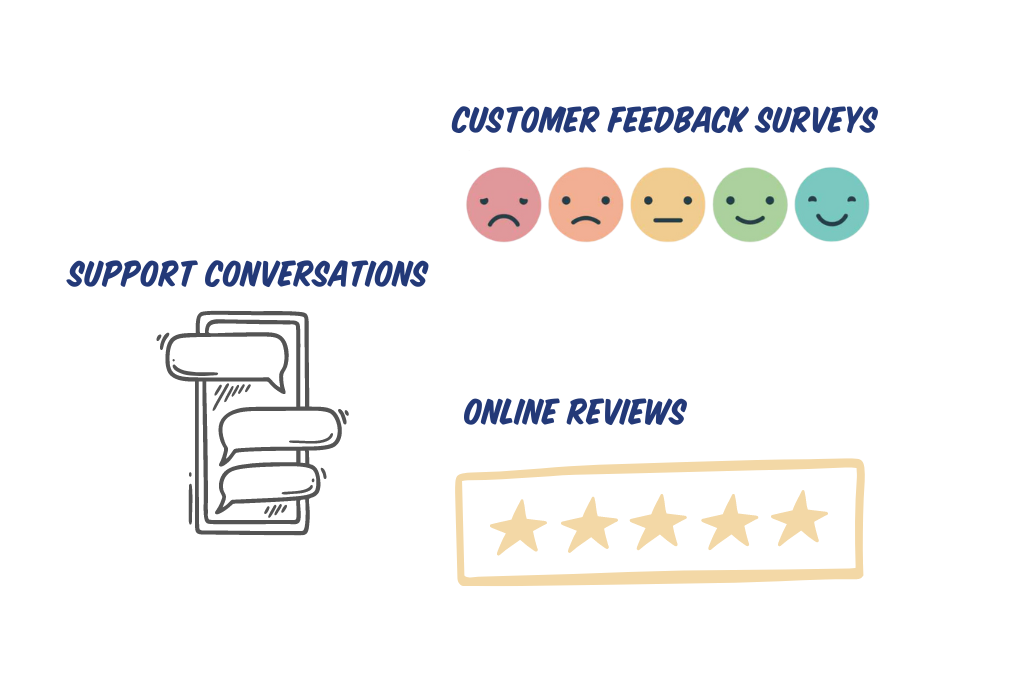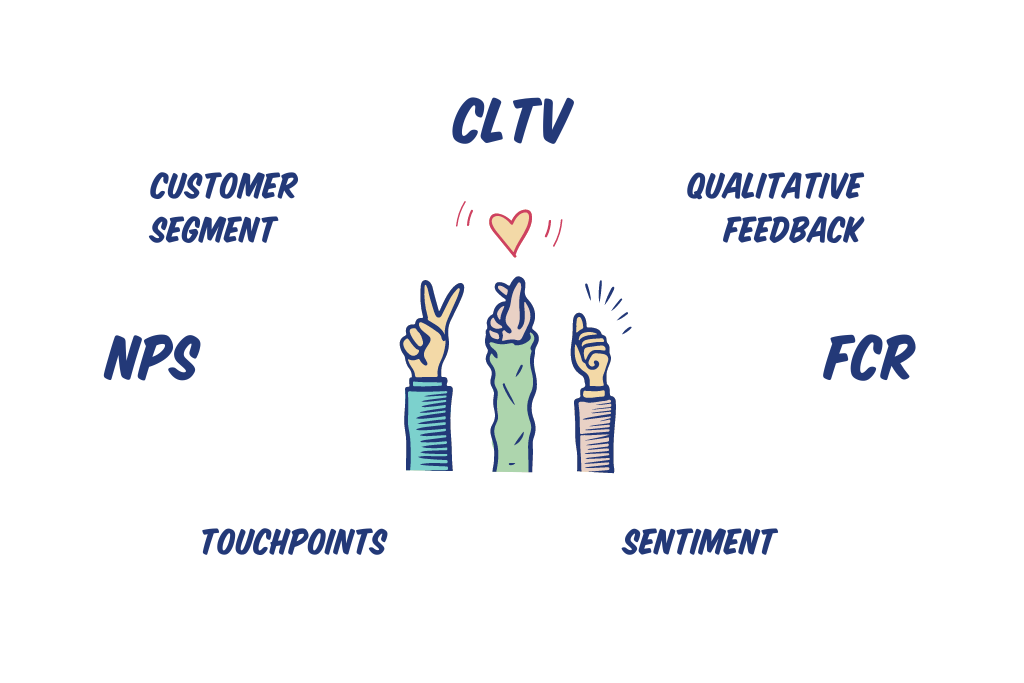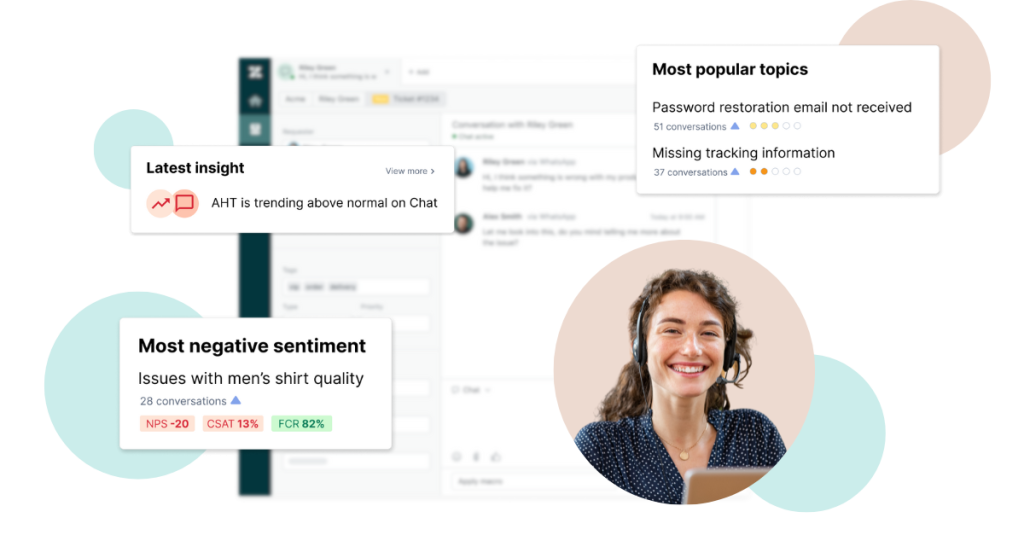Älykkäämpi tapa analysoida asiakaspalautetta
Surveypal tarjoaa modernit työkalut asiakaskokemuksen mittaamiseen, seurantaan ja kehittämiseen. Älä tyydy vain palautteen keräämiseen – hyödynnä täysin taustadataa, jotta ymmärrät palautteen kontekstin ja saat kattavan kuvan toimintasi kehityskohteista.
Kuuntele, ymmärrä ja toimi viisaammin Surveypalin avulla.

Yli 150 miljoonaa palautetta vastaanotettu – ja laskuri käy!
Aseta asiakkaan ääni etusijalle
Kaikki palaute ei ole samanarvoista. Opettele priorisoimaan ja ymmärtämään, miksi tietynlaista palautetta annetaan.
Ilman Surveypalia
Surveypalin avulla
Kaikki työkalut huippuluokan asiakaskokemukseen
Surveypal on suunniteltu tuomaan järjestelmällisyyttä ja läpinäkyvyyttä asiakaspalautteen keräämiseen, hallintaan ja seurantaan koko asiakaspolun varrelle.
Kuuntele
Selvitä mitä asiakkaittesi mielessä liikkuu keräämällä säännöllisesti palautetta. Löydä piilevät helmet asiakaspalvelukeskusteluista ja kuuntele kaikkien asiakkaidesi – myös hiljaisten – ääntä. Työkalumme mahdollistavat palautteen keräämisen saumattomasti kaikissa kosketuspisteissä.

Kontekstualisoi
Rikasta asiakaspalautetta yhdistämällä palaute taustadataan. Yhdistämme asiakastiedot ja -kontaktit saatuun palautteeseen, jotta ymmärrät positiivisen ja negatiivisen palautteen perimmäiset syyt.

Close the loop -reaktiomallit
Muunna oivallukset toiminnaksi. Pysy edellä ennakoimalla trendejä, seuraamalla avainmittareita ja ymmärtämällä asiakastyytyväisyyden syvemmät ajurit. Toiminnalliset oivalluksemme paljastavat kaavojen poikkeamat, joihin on reagoitava.

Paranna
Virittääksesi asiakastoimintasi huippuunsa, sinun on nähtävä palautteen taustalla vaikuttavat tekijät ja ymmärrettävä muutosten vaikutus. Löydä oikea tasapaino asiakastyytyväisyyden ja operatiivisen tehokkuuden välillä.

Uudelleenmääritämme asiakaspalautteen
Huipputasoisessa asiakaskokemuksessa palaute ulottuu perinteisten kyselyiden ulkopuolelle. Surveypal analysoi sekä suoran että epäsuoran palautteen, kuten asiakaspalvelukeskustelujen sisällön. Asiantuntemuksemme auttaa sinua hyödyntämään täysimääräisesti asiakkaiden ääntä asiakaspolun jokaisessa kriittisessä vaiheessa.
Kiinnostaako kuulla lisää? Ota yhteyttä.


Kerää kaikki palaute yhteen paikkaan
Huolestuttaako valtava IT-projekti? Älä huolestu enää. Palautteen yhdistäminen on nopeaa ja helppoa:
Turvallinen ja luotettava
Tietosi kuuluvat sinulle – olemme täällä auttamassa sinua hyödyntämään niitä parhaalla mahdollisella tavalla.
Tietosuojan mukainen (GDPR, CCPA jne.)
Surveypal on 100% pilvipohjainen
Yli 600 yritystä ympäri maailmaa luottaa meihin
Olemme
ISO 27001 sertifioituja
Uusimmat blogikirjoitukset
Vinkkejä ja asiantuntijanäkemyksiä siitä, miten parantaa asiakaskokemustasi.

Surveypal on nyt ISO 27001 sertifioitu
20 Vuotta NPS:ää – Asiakaskokemuksen Matka ja Tulevaisuus
Asiakasymmärrys ja datalla johtaminen Ambientian toiminnan ytimessä
Näin saat suosittelijasi suosittelemaan vielä enemmän
Muunna palaute kasvumahdollisuudeksi
Paranna asiakaskokemustasi kontekstuaalisen asiakasälykkyyden avulla. Ota selvää, miten Surveypal voi auttaa sinua matkallasi kohti täysin asiakaslähtöistä toimintaa.




